Determining the Weightage of Visual Aesthetic Variables for Permanent Urban Forest Reserves Based on the Converging Approach
Abstract
1. Introduction
2. Materials and Methods
2.1. Study Area Selection
2.2. Identifying Multiple Variables Based on Perception Approach
2.3. Importance Multiple Variables Based on Expert Survey Assessment
2.4. Weightage Multiple Variables Based on an Analytical Hierarchy Process
2.4.1. Pairwise Comparisons of the Multiple Variables
2.4.2. Consistency Ratio and Raw Weights of the Multiple Variables
2.4.3. Weightage Normalization of the Multiple Variables
3. Results
3.1. Data Collection and Classification as Multiple Variables
3.2. Expert Sample Size and Demographic
3.3. Validation of Variable Based on Expert Survey Description
3.4. Determining Importance Variables Based on Expert Survey Assessment
3.5. Determining Weightage Variables Based on an Analytical Hierarchy Process
- -
- Number of pairwise comparisons = 91
- -
- Principal eigenvalue λ max = 14.524
- -
- Consistency Index CI = 0.040
- -
- Random consistency index RI = 1.57
- -
- Consistency Ratio CR = 0.025 < 0.1 (valid and consistent)
4. Discussion
5. Limitations and Future Study
6. Conclusions
Author Contributions
Funding
Data Availability Statement
Conflicts of Interest
Appendix A
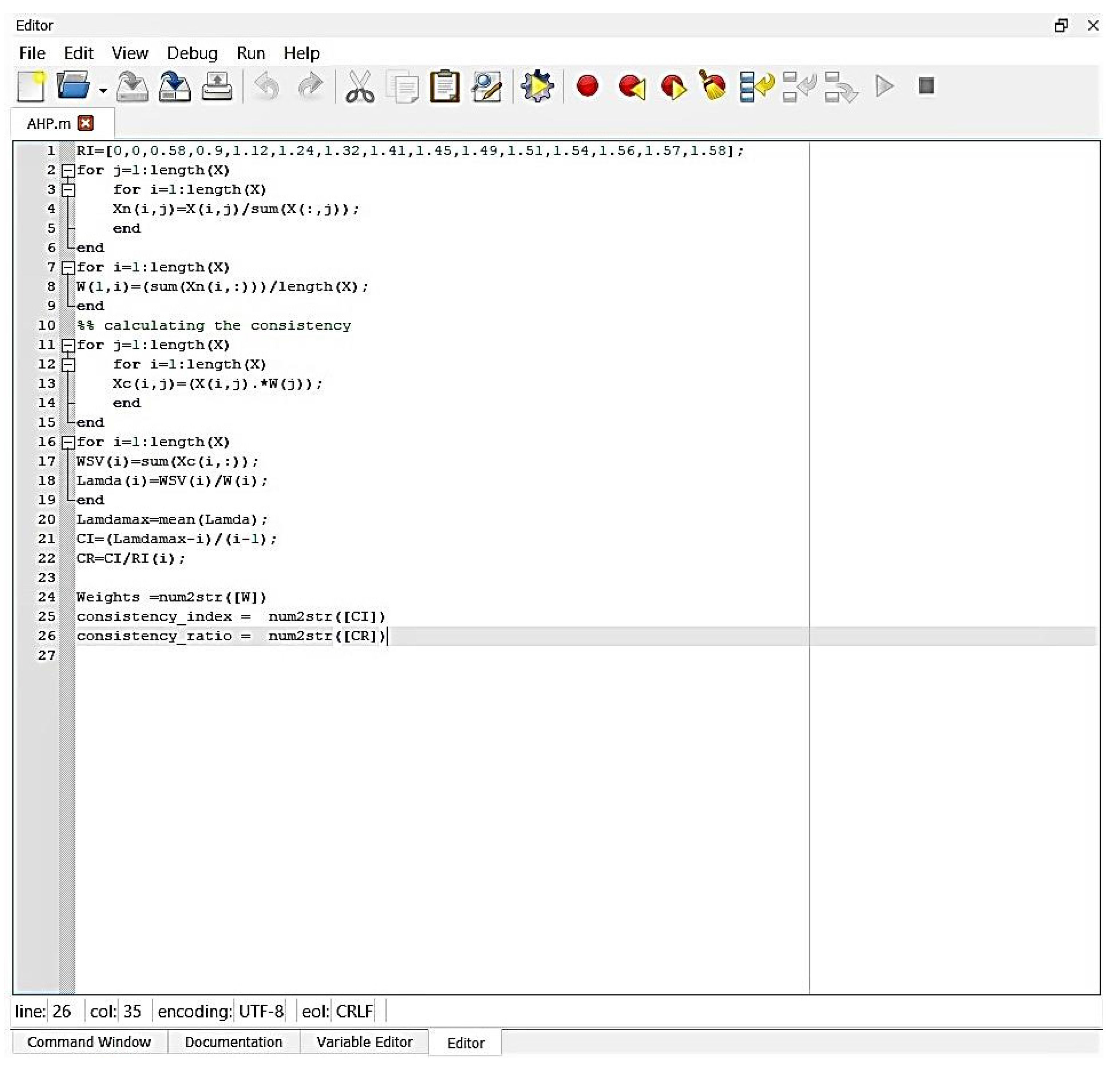
Appendix B
| No. | Variable | ||
|---|---|---|---|
| 1 | Coherence | ||
| Photo | 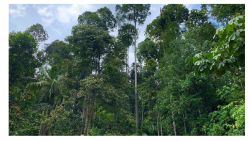 | 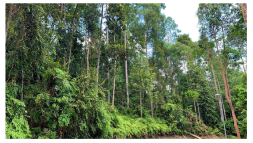 |  |
| A01 | A02 | A03 | |
| 2 | Complexity | ||
| Photo |  | 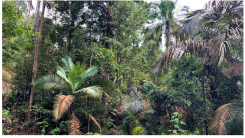 | 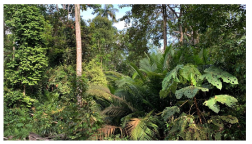 |
| B01 | B02 | B03 | |
| 3 | Legibility with natural path | ||
| Photo | 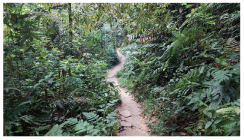 | 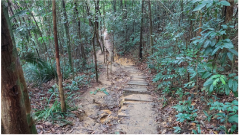 |  |
| C01 | C02 | C03 | |
| 4 | Legibility with man-made path | ||
| Photo |  | 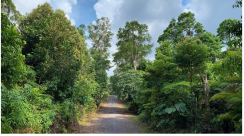 | 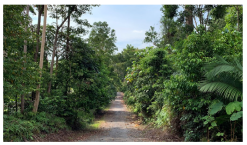 |
| D01 | D02 | D03 | |
| 5 | Mystery with natural path | ||
| Photo | 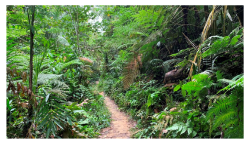 | 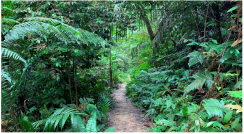 | 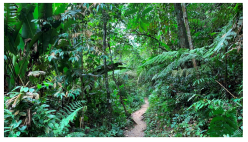 |
| E01 | E02 | E03 | |
| 6 | Mystery with man-made path | ||
| Photo | 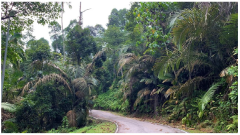 | 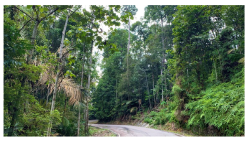 |  |
| F01 | F02 | F03 | |
| 7 | Openness with tree view | ||
| Photo | 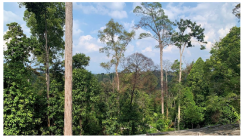 |  | 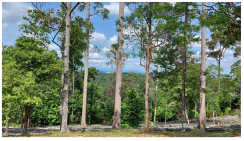 |
| G01 | G02 | G03 | |
| 8 | Openness with framing view | ||
| Photo | 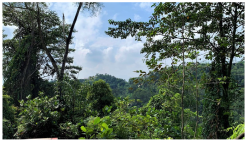 |  |  |
| H01 | H02 | H03 | |
| 9 | Openness with city view | ||
| Photo |  | 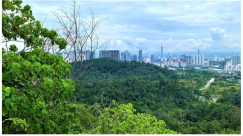 | 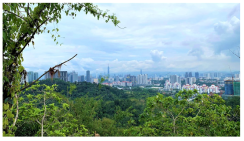 |
| I01 | I02 | I03 | |
| 10 | Openness with water view | ||
| Photo | 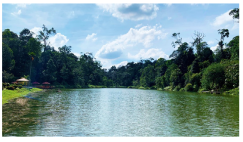 | 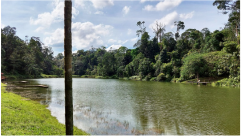 | 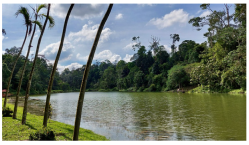 |
| J01 | J02 | J03 | |
| 11 | Uniqueness with natural elements | ||
| Photo |  | 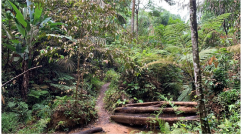 | 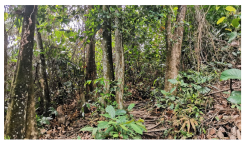 |
| K01 | K02 | K03 | |
| 12 | Uniqueness with man-made elements | ||
| Photo | 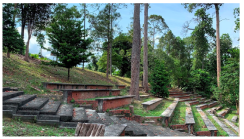 |  | 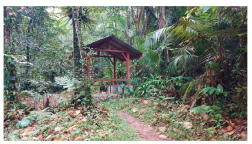 |
| L01 | L02 | L03 | |
| 13 | Uniqueness water with natural elements | ||
| Photo | 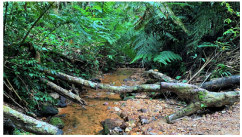 | 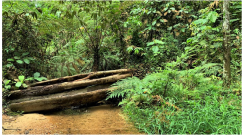 | 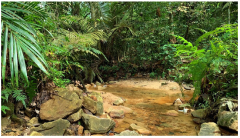 |
| M01 | M02 | M03 | |
| 14 | Uniqueness water with man-made elements | ||
| Photo | 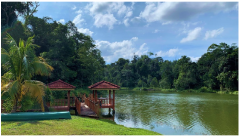 | 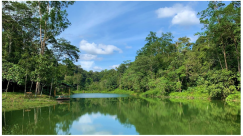 | 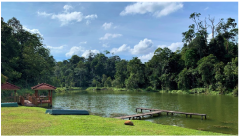 |
| N01 | N02 | N03 | |
References
- Rathmann, J.; Beck, C.; Flutura, S.; Seiderer, A.; Aslan, I.; André, E. Towards quantifying forest recreation: Exploring outdoor thermal physiology and human well-being along exemplary pathways in a central European urban forest (Augsburg, SE-Germany). Urban For. Urban Green. 2020, 49, 126622. [Google Scholar] [CrossRef]
- Velarde, M.D.; Fry, G.; Tveit, M. Health effects of viewing landscapes—Landscape types in environmental psychology. Urban For. Urban Green. 2007, 6, 199–212. [Google Scholar] [CrossRef]
- Wang, R.; Zhao, J.; Meitner, M.J.; Hu, Y.; Xu, X. Characteristics of urban green spaces in relation to aesthetic preference and stress recovery. Urban For. Urban Green. 2019, 41, 6–13. [Google Scholar] [CrossRef]
- Mundher, R.; Abu Bakar, S.; Maulan, S.; Mohd Yusof, M.J.; Al-Sharaa, A.; Aziz, A.; Gao, H. Aesthetic Quality Assessment of Landscapes as a Model for Urban Forest Areas: A Systematic Literature Review. Forests 2022, 13, 991. [Google Scholar] [CrossRef]
- Mundher, R.; Al-Sharaa, A.; Al-Helli, M.; Gao, H.; Abu Bakar, S. Visual Quality Assessment of Historical Street Scenes: A Case Study of the First “Real” Street Established in Baghdad. Heritage 2022, 5, 3680–3704. [Google Scholar] [CrossRef]
- Kirillova, K.; Fu, X.; Lehto, X.; Cai, L. What makes a destination beautiful? Dimensions of tourist aesthetic judgment. Tour. Manag. 2014, 42, 282–293. [Google Scholar] [CrossRef]
- Hauser, D.; Leopold, A.; Egger, R.; Ganewita, H.; Herrgessell, L. Aesthetic perception analysis of destination pictures using #beautifuldestinations on Instagram. J. Destin. Mark. Manag. 2022, 24, 100702. [Google Scholar] [CrossRef]
- Jean-Christophe, F.; Jens, I.; Nicolas, B. Coupling crowd-sourced imagery and visibility modelling to identify landscape preferences at the panorama level. Landsc. Urban Plan. 2020, 197, 103756. [Google Scholar] [CrossRef]
- Othman, N.; Mohamed, N.; Ariffin, M.H. Landscape Aesthetic Values and Visiting Performance in Natural Outdoor Environment. Procedia Soc. Behav. Sci. 2015, 202, 330–339. [Google Scholar] [CrossRef]
- Ruban, D.A.; Sallam, E.S.; Ermolaev, V.A.; Yashalova, N.N. Aesthetic Value of Colluvial Blocks in Geosite-Based Tourist Destinations: Evidence from SW Russia. Geosciences 2020, 10, 51. [Google Scholar] [CrossRef]
- Paletto, A.; Becagli, C.; De Meo, I. Aesthetic preferences for deadwood in forest landscape: A case study in Italy. J. Environ. Manag. 2022, 311, 114829. [Google Scholar] [CrossRef]
- Lies, J. Aesthetics Rising from Beauty to Reputation Management. Corp. Reput. Rev. 2021, 24, 105–115. [Google Scholar] [CrossRef]
- Jeon, J.Y.; Jo, H.I. Effects of audio-visual interactions on soundscape and landscape perception and their influence on satisfaction with the urban environment. Build. Environ. 2020, 169, 106544. [Google Scholar] [CrossRef]
- Mundher, R.; Abu Bakar, S.; Maulan, S.; Mohd Yusof, M.J.; Osman, S.; Al-Sharaa, A.; Gao, H. Exploring Awareness and Public Perception towards the Importance of Visual Aesthetics for Preservation of Permanent Forest Reserve (PFR) in Malaysia. Land 2022, 11, 1280. [Google Scholar] [CrossRef]
- Jovanovska, D.; Swetnam, R.D.; Tweed, F.S.; Melovski, L. Assessing the landscape visual quality of Shar Planina, North Macedonia. Landsc. Ecol. 2020, 35, 2805–2823. [Google Scholar] [CrossRef]
- Hauru, K.; Koskinen, S.; Kotze, D.J.; Lehvävirta, S. The effects of decaying logs on the aesthetic experience and acceptability of urban forests—Implications for forest management. Landsc. Urban Plan. 2014, 123, 114–123. [Google Scholar] [CrossRef]
- Daniel, T.C. Whither scenic beauty? Visual landscape quality assessment in the 21st century. Landsc. Urban Plan. 2001, 54, 267–281. [Google Scholar] [CrossRef]
- Ghosh, A.; Maiti, R. Development of new Ecological Susceptibility Index (ESI) for monitoring ecological risk of river corridor using F-AHP and AHP and its application on the Mayurakshi river of Eastern India. Ecol. Inform. 2021, 63, 101318. [Google Scholar] [CrossRef]
- Lu, J.W.; Xie, Y.; Xu, B.; Huang, Y.; Hai, J.; Zhang, J. From NIMBY to BIMBY: An evaluation of aesthetic appearance and social sustainability of MSW incineration plants in China. Waste Manag. 2019, 95, 325–333. [Google Scholar] [CrossRef]
- Zhao, J.; Zhang, Z. On the stress-state dependent plasticity of brittle metallic glasses: Experiment, theory and simulation. Mater. Sci. Eng. A 2013, 586, 123–132. [Google Scholar] [CrossRef]
- Kaplan, S.; Kaplan, R. Cognition and Environment: Functioning in an Uncertain World; Praeger: New York, NY, USA, 1982. [Google Scholar]
- Mundher, R.; Abu Bakar, S.; Al-Helli, M.; Gao, H.; Al-Sharaa, A.; Mohd Yusof, M.J.; Maulan, S.; Aziz, A. Visual Aesthetic Quality Assessment of Urban Forests: A Conceptual Framework. Urban Sci. 2022, 6, 79. [Google Scholar] [CrossRef]
- De La Fuente De Val, G.; Mühlhauser, S.H. Visual quality: An examination of a south american mediterranean landscape, andean foothills east of santiago (chile). Urban For. Urban Green. 2014, 13, 261–271. [Google Scholar] [CrossRef]
- Stamps, A.E. Mystery, complexity, legibility and coherence: A meta-analysis. J. Environ. Psychol. 2004, 24, 1–16. [Google Scholar] [CrossRef]
- Appleton, J. The Experience of Landscape; Wiley: London, UK, 1975. [Google Scholar]
- De la Fuente de Val, G.; Atauri, J.A.; de Lucio, J.V. Relationship between landscape visual attributes and spatial pattern indices: A test study in Mediterranean-climate landscapes. Landsc. Urban Plan. 2006, 77, 393–407. [Google Scholar] [CrossRef]
- Ode, Å.; Tveit, M.; Fry, G. Capturing landscape visual character using indicators: Touching base with landscape aesthetic theory. Landsc. Res. 2008, 33, 89–117. [Google Scholar] [CrossRef]
- Rosley, M.S.F.; Rahman, S.R.A.; Lamit, H. Biophilia Theory Revisited: Experts and Non-experts Perception on Aesthetic Quality of Ecological Landscape. Procedia Soc. Behav. Sci. 2014, 153, 349–362. [Google Scholar] [CrossRef]
- Dann, G.M. Tourist Motivatio. An Ppraisal. Ann. Tour. Res. 1981, 8, 187–219. [Google Scholar] [CrossRef]
- Hermes, J.; Albert, C.; von Haaren, C. Assessing the aesthetic quality of landscapes in Germany. Ecosyst. Serv. 2018, 31, 296–307. [Google Scholar] [CrossRef]
- Balomenou, N.; Garrod, B. A Review of Participant-Generated Image Methods in the Social Sciences. J. Mix. Methods Res. 2015, 10, 335–351. [Google Scholar] [CrossRef]
- Sugimoto, K. Quantitative measurement of visitors’ reactions to the settings in urban parks: Spatial and temporal analysis of photographs. Landsc. Urban Plan. 2013, 110, 59–63. [Google Scholar] [CrossRef]
- Hussainzad, E.A.; Mohd Yusof, M.J.; Gao, H.; Yu Yang, K.K.; Kueng Ming, N.W.; Abdul Majid, M.S.B.; Xu, T. Assessing Hutan Simpan Ampang using GIS-based Potential Surface Analysis approach. IOP Conf. Ser. Earth Environ. Sci. 2020, 540, 012030. [Google Scholar] [CrossRef]
- Abu Bakar, S. Land Suitability for Rice Growing in the Klang Valley Using Geographical Information System and Analytical Hierarchy Process for Urban Food Security; Universiti Putra Malaysia: Serdang, Malaysia, 2007; Available online: https://www.researchgate.net/publication/265283982 (accessed on 11 September 2022).
- Saaty, T.L. Axiomatization of the Analytic Hierarchy Process. Manag. Sci. 1986, 32, 841–855. [Google Scholar] [CrossRef]
- Goepel, K. Implementation of an Online software tool for the Analytic Hierarchy Process (AHP-OS). Int. J. Anal. Hierarchy Process 2018, 10, 469–487. [Google Scholar] [CrossRef]
- Hafizan, C.; Noor, Z.Z.; Abba, A.H.; Hussein, N. An alternative aggregation method for a life cycle impact assessment using an analytical hierarchy process. J. Clean. Prod. 2016, 112, 3244–3255. [Google Scholar] [CrossRef]
- Zarkesh, M.M.K.; Ghoddusi, J.; Zaredar, N.; Soltani, M.J.; Jafari, S.; Ghadirpour, A. Application of spatial analytical hierarchy process model in land use planning. J. Food Agric. Environ. 2010, 8, 970–975. [Google Scholar]
- Vafaei, N.; Ribeiro, R.A.; Camarinha-Matos, L.M. Data normalisation techniques in decision making: Case study with TOPSIS method. Int. J. Inf. Decis. Sci. 2018, 10, 27–29. Available online: http://www.ca3-uninova.org (accessed on 25 September 2022). [CrossRef]
- Roscoe, J.T. Fundamental Research Statistics for the Behavioral Sciences, 2nd ed.; Holt Rinehart and Winston: New York, NY, USA, 1975. [Google Scholar]
- Memon, M.A.; Ting, H.; Cheah, J.-H.; Thurasamy, R.; Chuah, F.; Cham, T.H. Sample Size for Survey Research: Review and Recommendations. J. Appl. Struct. Equ. Model. 2020, 4, i–xx. [Google Scholar] [CrossRef]
- Ma, B.; Hauer, R.J.; Xu, C. Effects of design proportion and distribution of color in urban and suburban green space planning to visual aesthetics quality. Forests 2020, 11, 278. [Google Scholar] [CrossRef]
- Al-Sharaa, A.; Adam, M.; Amer Nordin, A.S.; Mundher, R.; Alhasan, A. Assessment of Wayfinding Performance in Complex Healthcare Facilities: A Conceptual Framework. Sustainability 2022, 14, 16581. [Google Scholar] [CrossRef]
- Wartmann, F.M.; Frick, J.; Kienast, F.; Hunziker, M. Factors influencing visual landscape quality perceived by the public. Results from a national survey. Landsc. Urban Plan. 2021, 208, 104024. [Google Scholar] [CrossRef]
- Tveit, M.; Ode, Å.; Fry, G. Key concepts in a framework for analysing visual landscape character. Landsc. Res. 2006, 31, 229–255. [Google Scholar] [CrossRef]
- Martín, R.; Yepes, V. The concept of landscape within marinas: Basis for consideration in the management. Ocean. Coast. Manag. 2019, 179, 104815. [Google Scholar] [CrossRef]
- Axelsson, Ö.; Nilsson, M.E.; Hellström, B.; Lundén, P. A field experiment on the impact of sounds from a jet-and-basin fountain on soundscape quality in an urban park. Landsc. Urban Plan. 2014, 123, 49–60. [Google Scholar] [CrossRef]
- Coleman, T.; Kearns, R. The role of bluespaces in experiencing place, aging and wellbeing: Insights from Waiheke Island, New Zealand. Health Place 2015, 35, 206–217. [Google Scholar] [CrossRef]
- Valdés-tejera, E. The aesthetics of water in current landscape architecture projects. In Proceedings of the 22nd Council of Europe Meeting of the Workshops for the implementation of the European Landscape Convention and International Congress Water, Landscape and Citizenship in the Face of Global Change, Seville, Spain, 14–15 March 2019; Available online: https://www.researchgate.net/publication/348448145 (accessed on 30 October 2022).
- Dorwart, C.E.; Moore, R.L.; Leung, Y.-F. Visitors’ Perceptions of a Trail Environment and Effects on Experiences: A Model for Nature-Based Recreation Experiences. Leis. Sci. 2009, 32, 33–54. [Google Scholar] [CrossRef]
- Liao, H.; Zhao, W.; Zhang, C.; Dong, W.; Huang, H. Detecting individuals’ spatial familiarity with urban environments using eye movement data. Comput. Environ. Urban Syst. 2022, 93, 101758. [Google Scholar] [CrossRef]
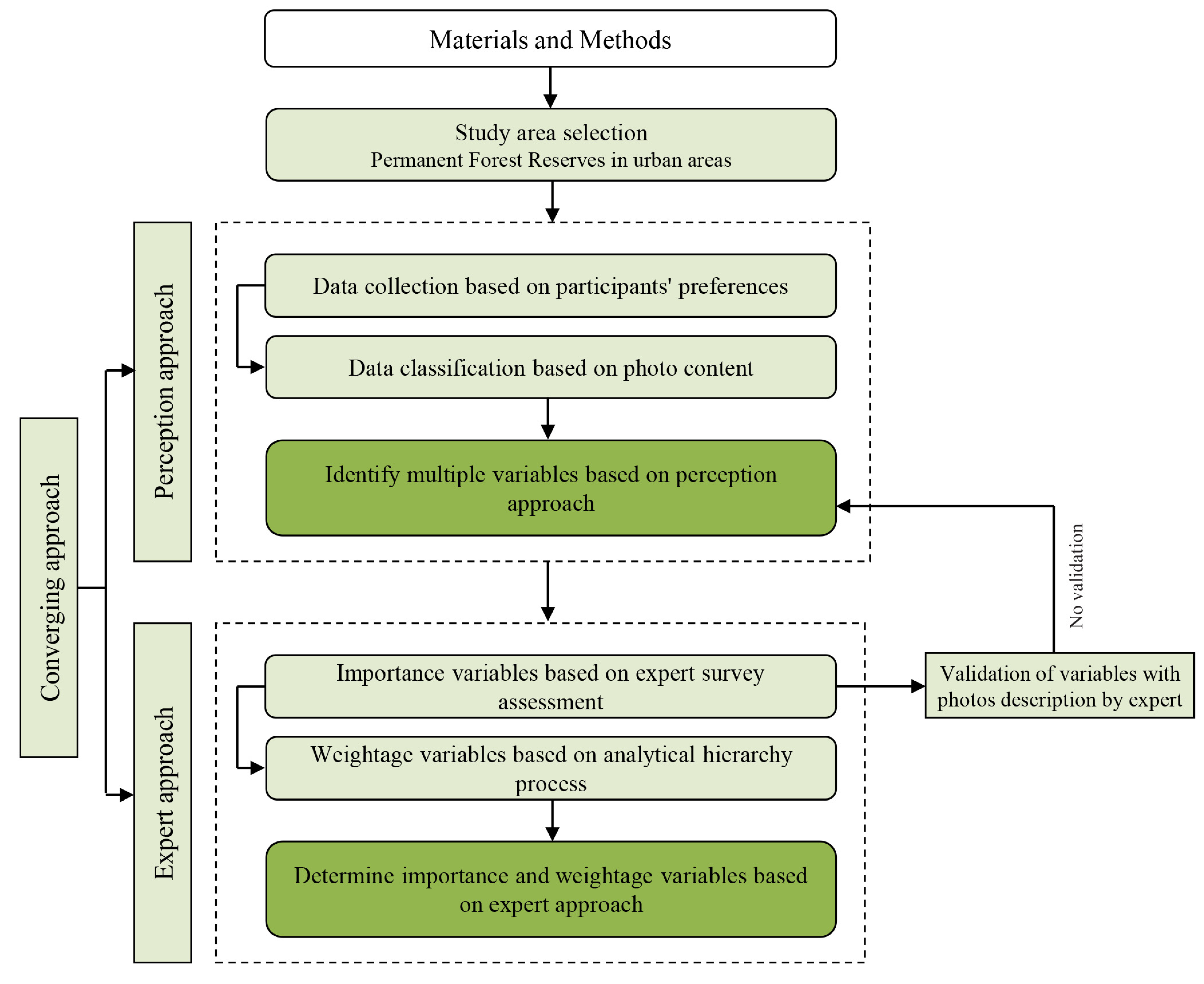

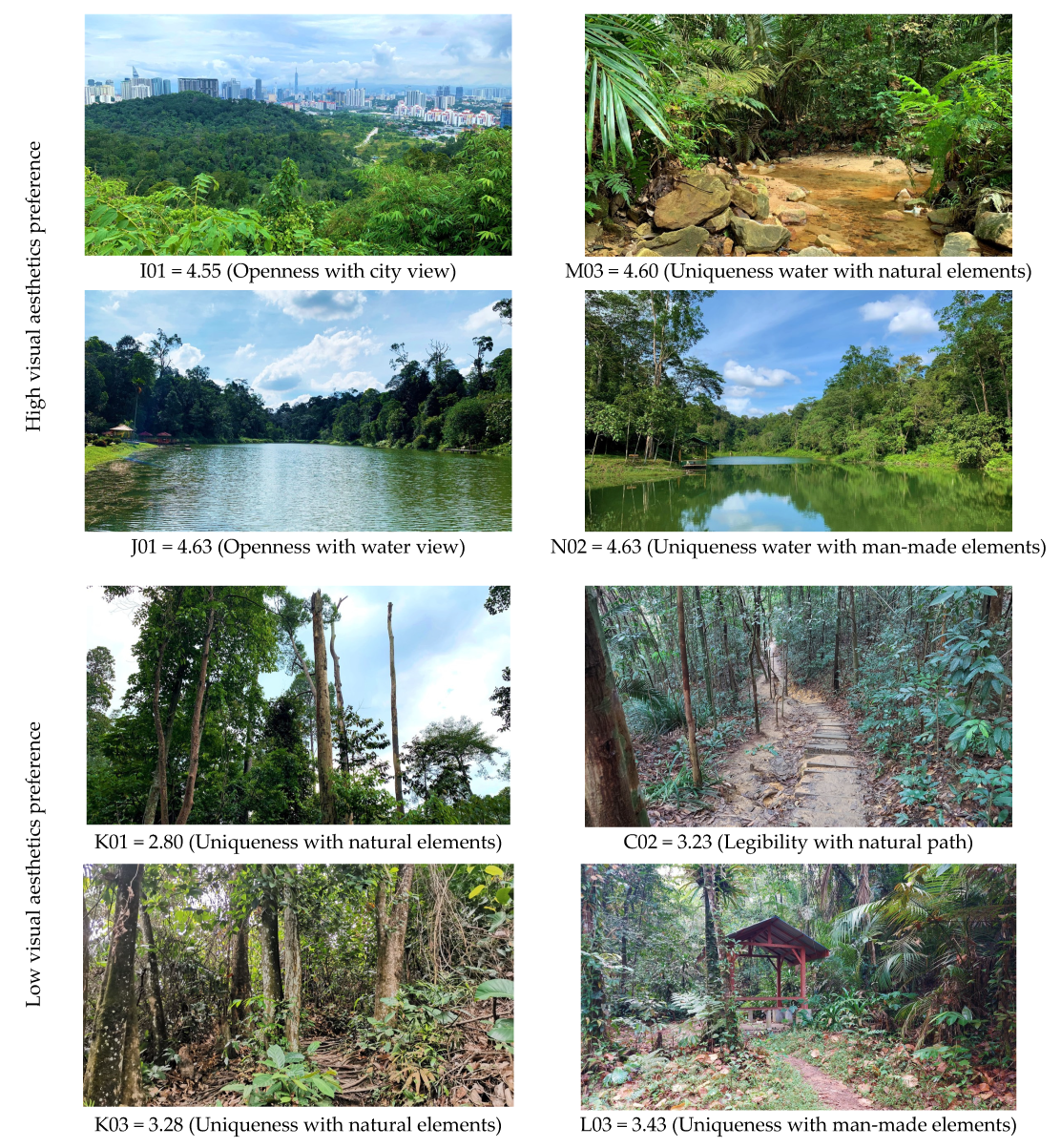

| Variable | Definition | Value | Theory |
|---|---|---|---|
| Coherence | Coherence is the unity and compatibility of the elements that can be perceived immediately. | The coherence value is high if the elements of one whole of the two-dimensional scene are united or harmonious, and vice versa. | Information Processing Theory |
| Complexity | Complexity is the diversity and richness of the elements that can be perceived immediately. | Complexity has a high value when the two-dimensional scenes are a variety or diversity of forest features and are not chaotic, and vice versa | |
| Legibility | Legibility is the ease with which a scene’s elements can be recognized, understood, and directed. | Legibility has a high value when the three-dimensional scene is clear and interpretable and vice versa. | |
| Mystery | Mystery is the promise of discovering a scene’s elements and the motivation and excitement of uncovering more hidden information. | The mystery value is high when the three-dimensional scene hides some information or elements from the observer, who can expect the element of surprise without feeling fear or danger, and vice versa. | |
| Openness | Openness is the ease with which a viewer can obtain a broad perspective of a scene. | Openness has a high value when the scene has a wide or panoramic perspective, and the viewer can feel the vastness of the viewshed, and vice versa. | Prospect–Refuge Theory |
| Uniqueness | Uniqueness is the quality that gives the probability of generating a distinct photo in the eye of the observer. | The uniqueness value is high when the scene gives a unique visual impression and is memorable or has unique characteristics, such as water or cultural elements, and vice versa. | Push–Pull Theory |
| Scale | Description |
|---|---|
| 1 | Equally important |
| 2 | Equally to moderately important |
| 3 | Moderately important |
| 4 | Moderately to strongly important |
| 5 | Strongly important |
| 6 | Strongly to very strongly important |
| 7 | Very strongly important |
| 8 | Very to extremely strongly important |
| 9 | Extremely important |
| N | 1 | 2 | 3 | 4 | 5 | 6 | 7 | 8 | 9 | 10 | 11 | 12 | 13 | 14 | 15 |
| RI | 0 | 0 | 0.58 | 0.90 | 1.12 | 1.24 | 1.32 | 1.41 | 1.45 | 1.49 | 1.51 | 1.48 | 1.56 | 1.57 | 1.59 |
| Participants No. | Gender | Age | Ethnicity | Background | Number of the Photos |
|---|---|---|---|---|---|
| 1 | Female | 30 | Chinese | Design | 57 |
| 2 | Female | 29 | Malay | Design | 64 |
| 3 | Male | 29 | Chinese | Design | 60 |
| 4 | Female | 30 | Indian | Environmental | 59 |
| 5 | Female | 30 | Chinese | Environmental | 67 |
| 6 | Female | 30 | Chinese | Environmental | 68 |
| 7 | Male | 29 | Malay | Technical | 56 |
| 8 | Male | 29 | Malay | Technical | 66 |
| 9 | Male | 33 | Malay | Technical | 74 |
| 10 | Female | 30 | Indian | Social | 58 |
| 11 | Female | 30 | Chinese | Social | 59 |
| 12 | Female | 30 | Malay | Social | 62 |
| Total number of photos | 750 | ||||
| Main Variables | Multiple Variables | Code | Total Number of Photos | |
|---|---|---|---|---|
| Coherence | 1 | Coherence | A | 135 |
| Complexity | 2 | Complexity | B | 97 |
| Legibility | 3 | Legibility with natural path | C | 9 |
| 4 | Legibility with man-made path | D | 156 | |
| Mystery | 5 | Mystery with natural path | E | 138 |
| 6 | Mystery with man-made path | F | 98 | |
| Openness | 7 | Openness with tree view | G | 13 |
| 8 | Openness with framing view | H | 13 | |
| 9 | Openness with city view | I | 13 | |
| 10 | Openness with water view | J | 5 | |
| Uniqueness | 11 | Uniqueness with natural elements | K | 23 |
| 12 | Uniqueness with man-made elements | L | 16 | |
| 13 | Uniqueness water with natural elements | M | 22 | |
| 14 | Uniqueness water with man-made elements | N | 11 | |
| Total number of photos | 750 | |||
| Category | Sub-Category | Percentages (%) | N. | |
|---|---|---|---|---|
| Gender | 1 | Male | 77.5% | 31 |
| 2 | Female | 22.5% | 9 | |
| Experiences | 1 | 1–5 Years | 27.5% | 11 |
| 2 | 6–10 Years | 22.5% | 9 | |
| 3 | More than 10 years | 50.0% | 20 | |
| Background of expertise | 1 | Forestry | 87.5% | 35 |
| 2 | Landscape | 7.5% | 3 | |
| 3 | Design and Architecture | 5.0% | 2 | |
| Education level | 1 | Bachelor’s degree | 15.0% | 6 |
| 2 | Master’s degree | 50.0% | 20 | |
| 3 | Doctoral degree | 35.0% | 14 | |
| Place of employment | 1 | Department of Forestry | 37.5% | 15 |
| 2 | Higher Learning Institution | 37.5% | 15 | |
| 3 | Other | 25.0% | 10 | |
| Scope of work/research interest | 1 | Management | 25.0% | 10 |
| 2 | Ecology | 10.0% | 4 | |
| 3 | Economy | 5.0% | 2 | |
| 4 | Recreation | 32.5% | 13 | |
| 5 | Education | 15.0% | 6 | |
| 6 | Planning and Design | 12.5% | 5 | |
| 7 | Other | 0.0% | 0 |
| No. | Variable | Describe Photo by Experts | N. * | Photo |
|---|---|---|---|---|
| 1 | Coherence |
| 20 14 2 2 1 1 | 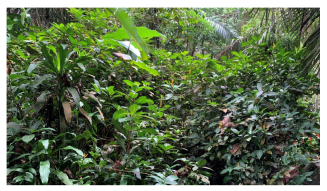 |
| 2 | Complexity |
| 9 8 7 6 5 2 2 1 | 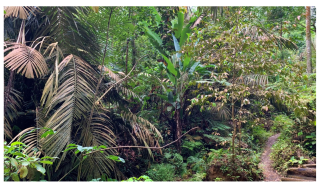 |
| 3 | Legibility with natural path |
| 17 8 6 3 3 1 1 1 | 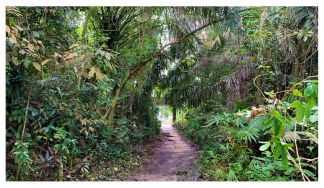 |
| 4 | Legibility with man-made path |
| 8 7 7 6 5 4 2 1 | 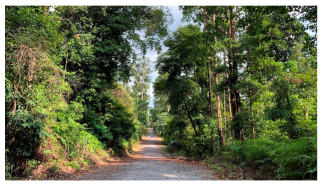 |
| 5 | Mystery with natural path |
| 14 9 4 4 3 2 2 1 1 | 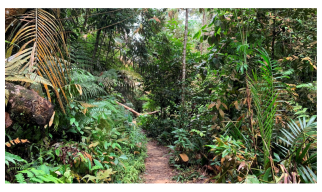 |
| 6 | Mystery with man-made path |
| 10 10 5 4 3 3 2 2 1 | 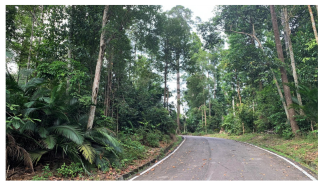 |
| 7 | Openness with tree view |
| 13 9 4 3 3 3 3 1 1 | 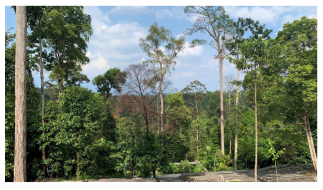 |
| 8 | Openness with framing view |
| 10 5 5 5 5 5 3 1 1 | 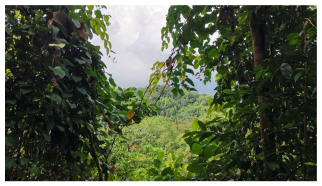 |
| 9 | Openness with city view |
| 15 9 3 3 3 2 2 2 1 | 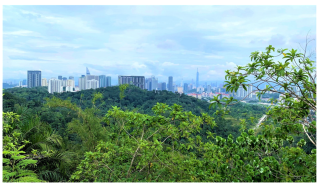 |
| 10 | Openness with water view |
| 13 12 5 3 3 2 1 1 | 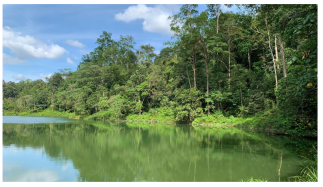 |
| 11 | Uniqueness with natural elements |
| 18 7 5 3 3 2 1 1 | 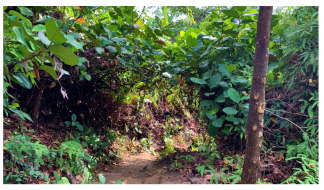 |
| 12 | Uniqueness with man-made elements |
| 11 6 6 4 4 4 2 2 1 | 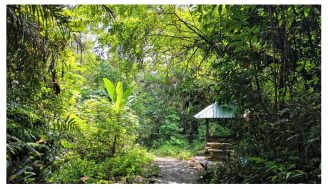 |
| 13 | Uniqueness water with natural elements |
| 10 6 4 4 4 4 4 2 2 | 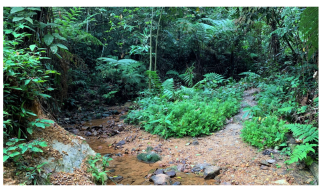 |
| 14 | Uniqueness water with man-made elements |
| 10 7 5 5 4 4 2 2 1 | 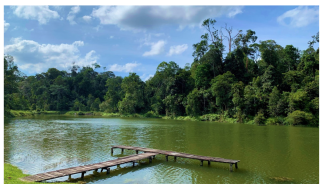 |
| Multi-Variables | Code | Photo 01 (Mean) | Photo 02 (Mean) | Photo 03 (Mean) | Average Mean |
|---|---|---|---|---|---|
| Coherence | A | 4.30 | 3.98 | 3.58 | 3.95 |
| Complexity | B | 4.23 | 3.68 | 3.60 | 3.84 |
| Legibility with natural path | C | 4.03 | 3.23 | 3.70 | 3.65 |
| Legibility with man-made path | D | 3.68 | 4.18 | 4.05 | 3.97 |
| Mystery with natural path | E | 3.98 | 4.00 | 4.10 | 4.03 |
| Mystery with man-made path | F | 3.65 | 3.95 | 3.65 | 3.75 |
| Openness with tree view | G | 3.80 | 4.08 | 4.05 | 3.98 |
| Openness with framing view | H | 3.90 | 3.73 | 3.78 | 3.80 |
| Openness with city view | I | 4.55 | 4.50 | 4.43 | 4.49 |
| Openness with water view | J | 4.63 | 4.28 | 4.18 | 4.36 |
| Uniqueness with natural elements | K | 2.80 | 3.60 | 3.28 | 3.23 |
| Uniqueness with man-made elements | L | 3.60 | 3.50 | 3.43 | 3.54 |
| Uniqueness water with natural elements | M | 4.45 | 4.33 | 4.60 | 4.46 |
| Uniqueness water with man-made elements | N | 4.18 | 4.63 | 4.20 | 4.34 |
| Variable Code | I | M | J | N | E | G | D | A | B | H | F | C | L | K |
|---|---|---|---|---|---|---|---|---|---|---|---|---|---|---|
| I | 1 | 1.00 | 1.00 | 2.00 | 4.00 | 4.00 | 4.00 | 4.00 | 5.00 | 5.00 | 6.00 | 7.00 | 7.00 | 9.00 |
| M | 1.00 | 1 | 1.00 | 2.00 | 4.00 | 4.00 | 4.00 | 4.00 | 5.00 | 5.00 | 6.00 | 7.00 | 7.00 | 9.00 |
| J | 1.00 | 1.00 | 1 | 2.00 | 4.00 | 4.00 | 4.00 | 4.00 | 5.00 | 5.00 | 6.00 | 7.00 | 7.00 | 9.00 |
| N | 0.50 | 0.50 | 0.50 | 1 | 3.00 | 3.00 | 3.00 | 3.00 | 4.00 | 4.00 | 5.00 | 6.00 | 6.00 | 8.00 |
| E | 0.25 | 0.25 | 0.25 | 0.33 | 1 | 1.00 | 1.00 | 1.00 | 2.00 | 2.00 | 3.00 | 4.00 | 4.00 | 6.00 |
| G | 0.25 | 0.25 | 0.25 | 0.33 | 1.00 | 1 | 1.00 | 1.00 | 2.00 | 2.00 | 3.00 | 4.00 | 4.00 | 6.00 |
| D | 0.25 | 0.25 | 0.25 | 0.33 | 1.00 | 1.00 | 1 | 1.00 | 2.00 | 2.00 | 3.00 | 4.00 | 4.00 | 6.00 |
| A | 0.25 | 0.25 | 0.25 | 0.33 | 1.00 | 1.00 | 1.00 | 1 | 2.00 | 2.00 | 3.00 | 4.00 | 4.00 | 6.00 |
| B | 0.20 | 0.20 | 0.20 | 0.25 | 0.50 | 0.50 | 0.50 | 0.50 | 1 | 1.00 | 2.00 | 3.00 | 3.00 | 5.00 |
| H | 0.20 | 0.20 | 0.20 | 0.25 | 0.50 | 0.50 | 0.50 | 0.50 | 1.00 | 1 | 2.00 | 3.00 | 3.00 | 5.00 |
| F | 0.17 | 0.17 | 0.17 | 0.20 | 0.33 | 0.33 | 0.33 | 0.33 | 0.50 | 0.50 | 1 | 2.00 | 2.00 | 4.00 |
| C | 0.14 | 0.14 | 0.14 | 0.17 | 0.25 | 0.25 | 0.25 | 0.25 | 0.33 | 0.33 | 0.50 | 1 | 1.00 | 3.00 |
| L | 0.14 | 0.14 | 0.14 | 0.17 | 0.25 | 0.25 | 0.25 | 0.25 | 0.33 | 0.33 | 0.50 | 1.00 | 1 | 3.00 |
| K | 0.11 | 0.11 | 0.11 | 0.12 | 0.17 | 0.17 | 0.17 | 0.17 | 0.20 | 0.20 | 0.25 | 0.33 | 0.33 | 1 |
| Variable | Code | Raw Weight (RW) | Normalization RW/MaxRW × n * | Weightage (W) |
|---|---|---|---|---|
| Coherence | A | 0.057 | 0.057/0.169 × 10 = 3.37 | 3 |
| Complexity | B | 0.037 | 0.037/0.169 × 10 = 2.18 | 2 |
| Legibility with natural path | C | 0.018 | 0.018/0.169 × 10 = 1.06 | 1 |
| Legibility with man-made path | D | 0.057 | 0.057/0.169 × 10 = 3.37 | 3 |
| Mystery with natural path | E | 0.057 | 0.057/0.169 × 10 = 3.37 | 3 |
| Mystery with man-made path | F | 0.026 | 0.026/0.169 × 10 = 1.53 | 2 |
| Openness with tree view | G | 0.057 | 0.057/0.169 × 10 = 3.37 | 3 |
| Openness with framing view | H | 0.037 | 0.037/0.169 × 10 = 2.18 | 2 |
| Openness with city view | I | 0.169 | 0.169/0.169 × 10 = 10.00 | 10 |
| Openness with water view | J | 0.169 | 0.169/0.169 × 10 = 10.00 | 10 |
| Uniqueness with natural elements | K | 0.011 | 0.010/0.169 × 10 = 0.65 | 1 |
| Uniqueness with man-made elements | L | 0.018 | 0.018/0.169 × 10 = 1.06 | 1 |
| Uniqueness water with natural elements | M | 0.169 | 0.169/0.169 × 10 = 10.00 | 10 |
| Uniqueness water with man-made elements | N | 0.118 | 0.118/0.169 × 10 = 6.98 | 7 |
| Sum | 1 |
Disclaimer/Publisher’s Note: The statements, opinions and data contained in all publications are solely those of the individual author(s) and contributor(s) and not of MDPI and/or the editor(s). MDPI and/or the editor(s) disclaim responsibility for any injury to people or property resulting from any ideas, methods, instructions or products referred to in the content. |
© 2023 by the authors. Licensee MDPI, Basel, Switzerland. This article is an open access article distributed under the terms and conditions of the Creative Commons Attribution (CC BY) license (https://creativecommons.org/licenses/by/4.0/).
Share and Cite
Mundher, R.; Abu Bakar, S.; Aziz, A.; Maulan, S.; Mohd Yusof, M.J.; Al-Sharaa, A.; Gao, H. Determining the Weightage of Visual Aesthetic Variables for Permanent Urban Forest Reserves Based on the Converging Approach. Forests 2023, 14, 669. https://doi.org/10.3390/f14040669
Mundher R, Abu Bakar S, Aziz A, Maulan S, Mohd Yusof MJ, Al-Sharaa A, Gao H. Determining the Weightage of Visual Aesthetic Variables for Permanent Urban Forest Reserves Based on the Converging Approach. Forests. 2023; 14(4):669. https://doi.org/10.3390/f14040669
Chicago/Turabian StyleMundher, Riyadh, Shamsul Abu Bakar, Azlizam Aziz, Suhardi Maulan, Mohd Johari Mohd Yusof, Ammar Al-Sharaa, and Hangyu Gao. 2023. "Determining the Weightage of Visual Aesthetic Variables for Permanent Urban Forest Reserves Based on the Converging Approach" Forests 14, no. 4: 669. https://doi.org/10.3390/f14040669
APA StyleMundher, R., Abu Bakar, S., Aziz, A., Maulan, S., Mohd Yusof, M. J., Al-Sharaa, A., & Gao, H. (2023). Determining the Weightage of Visual Aesthetic Variables for Permanent Urban Forest Reserves Based on the Converging Approach. Forests, 14(4), 669. https://doi.org/10.3390/f14040669







